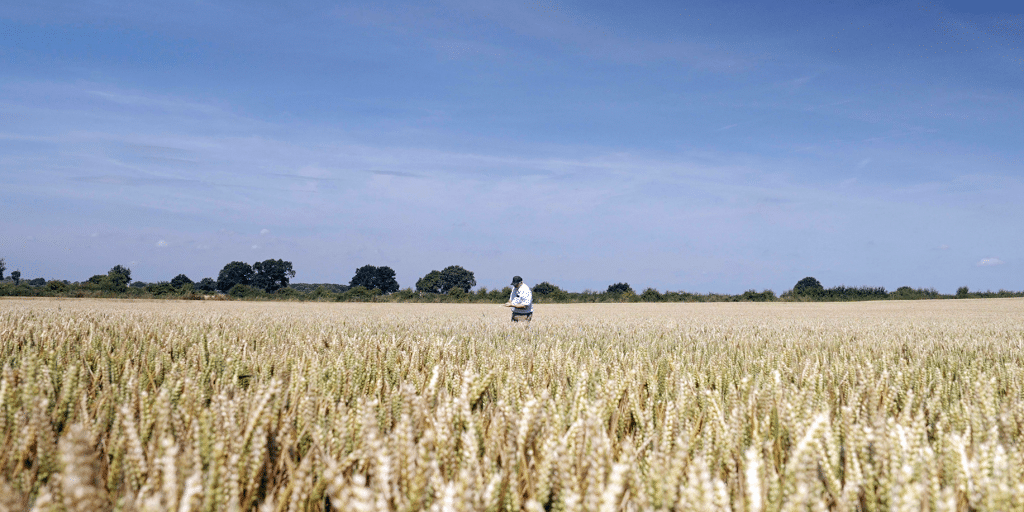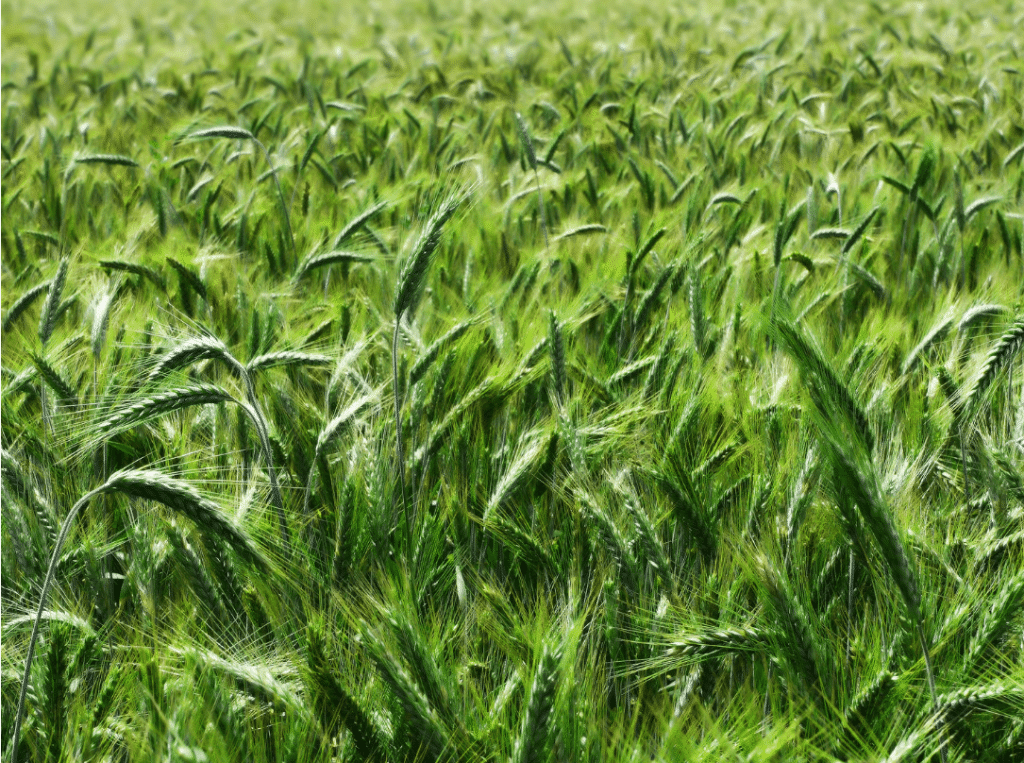Of all the weeds that impact on arable farming in the UK, blackgrass is one of the most costly.
Infestations of this native annual grass can have a devastating impact on arable yields, particularly winter wheat, but also on winter barley, OSR and beans.
Unfortunately, with widespread and growing herbicide resistance, effective control of blackgrass is both challenging and multifaceted.
Preventing and managing infestations must be considered at a whole-farm, cultural level, rather than just a blanket chemical application.
So, what exactly is blackgrass and how does it impact on British growers? And crucially, how can it be managed? In this article, we dig deep to find out.
What is Blackgrass?
Before we look at the effective control of blackgrass, it is important to understand what we’re dealing with.
Blackgrass – latin name Alopecurus myosuroides – is an annual grass that is native to Eurasia and which thrives on heavy land with poor drainage, although it can establish in moist, chalky soils, too.
It was first reported in the UK in 1972 and was initially confined to the south east of England, but has since travelled north and west to reach Northumberland and south east Scotland.
Around 80% of blackgrass emergence occurs in autumn with strong early autumn-germination following hot dry summers. Cold, wet autumns tend to lead to an increase in dormancy and delayed germination, but this does little to impair the damaging impact of the weed.
Emergence patterns are significantly influenced by seed dormancy, soil moisture and temperature levels. As a result, there is very little emergence in spring from undisturbed soils.
Most emergence occurs from seeds within 5cm of the soil surface.
Typically, blackgrass seeds germinate in autumn, flower from April to July and shed seeds prior to harvest, from June to August.
Seeds can survive for up to five years, although annual seed decline is typically between 68% and 80%.
Blackgrass Identification
Despite its name, blackgrass is not actually black. In fact, it is blueish green with purple seedling leaf sheaths.
The plant stands upright and can grow up to three feet in height. It has slender, round stems, and has hairless, twisted leaves. The flowers are a dense, cylindrical, spike-like panicle or flowerhead, typically dark purple or red in colour.
Blackgrass can be easily confused with other weeds such as loose silky-bent, as both plants look similar when young, and other grass varieties including Timothy, meadow foxtail and sweet vernal.
However, given the proliferation of blackgrass in UK arable crops, any plant fitting the above description that stands above the crop canopy is likely to be blackgrass.

Why is Blackgrass a Problem?
Blackgrass is one of the biggest problems facing UK growers and costs them on average £400m per year through lost yield and ineffective treatments.
A severe outbreak can reduce yields by as much as 70%, particularly in winter wheat crops.
Top this off with the fact blackgrass is highly resistant to herbicides, and it is easy to understand why it is such a problem.
One of the main reasons for blackgrass’s success is its high proliferation rate. Each blackgrass plant can produce on average two to 20 heads with approximately 100 seeds per head, meaning the seed burden increases exponentially in the soil.
Considering just 12 plants per square metre can reduce yields by as much as 5%, it’s not difficult to predict the outcome of a large, rapid build-up of blackgrass.
But the problem doesn’t end here. Blackgrass is also highly competitive and can outperform the main crop for space, light, nutrients and water.
Contamination of the crop prior to harvest drives down yield and quality, often reducing what otherwise would have been a high quality crop to animal feed.
Blackgrass Control
So, with blackgrass causing such damage to arable crops, plus the levels of resistance it has built up over the past half a century, what is an effective control strategy for this most persistent of weeds?
The key is to take a holistic approach that takes into consideration cultural controls such as seed treatments, plant varieties, drill timings, crop rotations and the use of break crops, as well as chemical applications.
Late Autumn Drilling
Traditionally, pushing back autumn drilling into October has been effective against blackgrass as it allows an initial post-summer flush of the weed to be sprayed off before seeding the main crop.
As well as helping to reduce the blackgrass burden within the field, drilling into cooler October soils enhances the effectiveness and longevity of herbicide residues, leading to more effective chemical use and helping to combat other issues such as Barley Yellow Dwarf Virus (BYDV).
As much as late drilling is a useful tool when it comes to blackgrass control, if your farm is blackgrass free, drilling main crops in September still remains the best option.
This is because the longer wheat and barley are in the ground, the greater the yield potential, so there is no need to compromise this with late seeding unless blackgrass is a genuine concern.
Drilling Spring Crops

As 80% of blackgrass emergence occurs in autumn, changing your rotation to include spring barley can help reduce yield loss.
As with late autumn seeding, growing spring crops means autumn blackgrass can be sprayed off and killed long before the main crop is planted, and with spring emergence of blackgrass being low, spring barley is generally unaffected by the weed.
Choosing the Right Plant Variety
Choosing wheat and barley varieties that are vigorous, thereby outcompeting grass weeds, can significantly supress blackgrass emergence.
Hybrid barleys, such as INYS and SY Kingsbarn, show significant early vigour, leading to the development of large root systems that enables them to outcompete surrounding grass weeds including blackgrass. They also produce a dense canopy, restricting light to weeds within the crop.
High vigour wheat varieties that are suited to late sowing are the best choices if blackgrass is an issue on your farm. These includes varieties such as Skyfall, KWS Extase, Champion, LG Beowulf, and SY Insitor.
At ADM Agriculture Ltd, we have close links with all UK breeding companies along with many European counterparts, enabling us to advise on and supply the best cereal varieties to help minimise the impact of blackgrass, as well as the many other agronomic and market orientated factors that impact on your farm business.
Seed Treatments
Seed treatments are another useful tool in the fight against blackgrass, and here at ADM Agriculture Ltd, we specialise in treatments that optimise the early performance of crops to help them to outcompete weeds.
Nuello iN, for example, is a biological treatment for winter wheat and barley containing nitrogen-fixing bacteria that provide a natural, early nitrogen boost. Not only does it improve root development, with up to 20% more root biomass compared to non-treated seeds, it significantly enhances early vigour enabling main crop plants to outperform neighbouring grass weeds.
Other seed treatments we supply are formulated to target specific conditions, such as Latitude which controls take-all disease in wheat, promoting strong emergence for higher-yielding crops.
Crop Rotation & Break Crops

Altering crop rotations and the use of break crops are effective in managing blackgrass as they can be used to interrupt the weed’s life cycle and reduce the need for herbicide applications.
By sowing a balance of different crops, it becomes harder for weed populations to develop.
As previously mentioned, incorporating spring crops in your rotation such as spring barley, or break crops such as spring beans or spring oats, will enable the traditional autumn flush of blackgrass to be sprayed off. As 80% of blackgrass emergence occurs in autumn, this can be very effective at managing the weed.
Although crop rotation is acknowledged as effective against blackgrass, it is difficult to quantify the precise impact of it. So, for advice on this approach, speak to our team of Farm Traders.
Summary
Blackgrass is a particularly pernicious weed that can have a devastating impact on cereal crops, costing British growers millions of pounds each year.
To make matters worse, growing herbicide resistance makes controlling the grass weed particularly challenging, meaning farmers must rely on a suite of cultural controls to keep it at bay.
Choosing the appropriate crop varieties, seed treatments, crop rotations and drilling times all have their place in blackgrass control, but piecing together the approach that works best for your farm can be puzzling.
But don’t worry, help is at hand. Our experts at ADM Agriculture are available to advise you on the best approach to managing blackgrass on your farm, so for more information, get in touch on 01472 421200.

